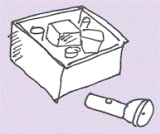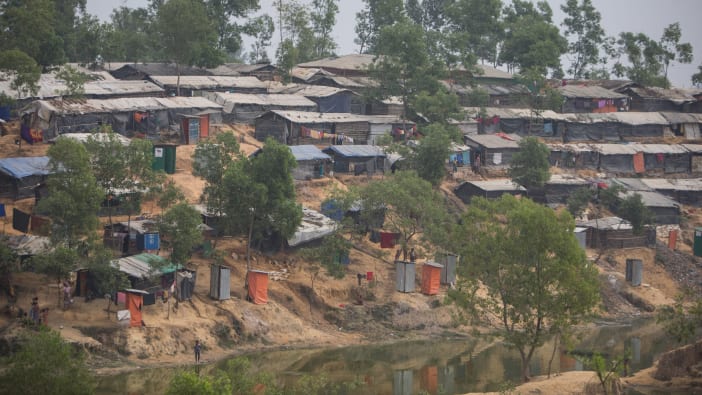Preparing for floods
- Where possible, keep a small stock of dry food that requires no cooking or refrigeration – dry fuel and electricity may become unavailable.
- Fill water containers with clean drinking water and cover them.
- Learn to swim. Family members who cannot swim should be encouraged to keep things which will enable them to float eg banana tree trunks, plastic bottles or coconuts.
- Store some essential items (such as sandbags or plastic sheeting) to protect your house and to make emergency repairs. If money permits, some wooden boards, a hammer and some nails would also be useful.
- Seeds should be double-wrapped in plastic bags or sealed in clay pots and buried in the ground, at a location which can be easily identified later.
- Prepare a family evacuation plan, taking special care of vulnerable members (see more in the box below).
- Consider how to alert others if you become trapped on a rooftop (eg tie coloured clothes to a stick and wave it as a flag).
- Put all electrical items in a higher place to avoid damage in flooding.

Preparing for windstorms
- If a windstorm is predicted, put together enough food to feed the family for five to seven days, and some containers of clean drinking water.
- Make sure the sick, elderly and most vulnerable people have access to safe, warm shelter and adequate food. They should be evacuated to safety as soon as warnings appear.
- Make sure all livestock are collected and placed somewhere safe on higher land. Animals are often left untied, so that they are free to save themselves
- Wrap up seeds for planting in small plastic bags, then – if possible – in a large piece of plastic for protection.
- If you have electricity in your home, turn off all electrical supply points and unplug appliances. Also turn off gas appliances and shut the valve on gas cylinders: this reduces the risk of fire.
- To reduce damage to property in a windstorm, fishermen sometimes cover grass roofs with their nets weighed down with stones. Other communities who live on the coast have chosen to live in houses which can be easily dismantled. They simply pick up the building materials and carry them inland to a more sheltered area!













